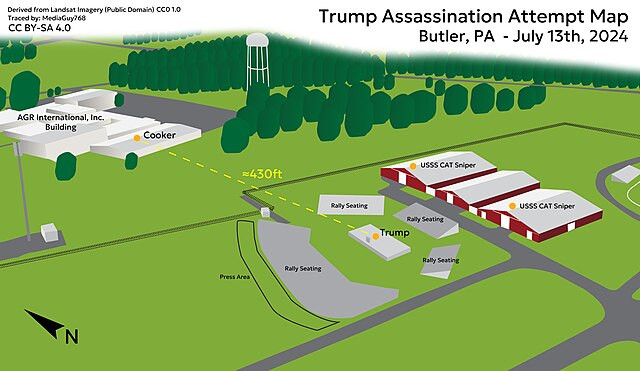A sniper from a local tactical team, stationed to support the U.S. Secret Service at former President Donald Trump's rally on Saturday, captured a photograph of the gunman and observed him using a rangefinder just minutes before the assassination attempt, according to a local law enforcement officer with direct knowledge of the events. The officer detailed the sequence of events to CBS News, shedding light on a series of potentially missed opportunities to prevent the attack.
The sniper, one of three deployed inside the building used by the shooter, Thomas Matthew Crooks, monitored Crooks as he moved about the area. The tactical team members were stationed inside, scanning the crowd through windows. As Crooks appeared and disappeared around the building, one sniper captured his image, which was then attempted to be relayed up the chain of command.
The local sniper first noticed Crooks outside the building, looking up at the roof. Crooks then returned, sat down, and checked his phone. At this point, the sniper took a picture of Crooks. Soon after, the sniper saw Crooks using a rangefinder, a tool used by marksmen to determine the distance to a target, and immediately radioed the command post. Despite the alert, officials lost track of Crooks, who reappeared with a backpack, prompting the sniper team to call for backup.
By the time other local officers arrived, Crooks had scaled the building, positioning himself above and behind the snipers inside. Two municipal officers attempted to confront him but were thwarted when Crooks aimed his rifle at them. Moments later, Crooks began firing into the crowd.
A U.S. Secret Service sniper, positioned in a building behind Trump, fired a single round that killed Crooks. Federal law enforcement officials identified Crooks as a "lone attacker" and warned of potential "follow-on or retaliatory" attacks related to the upcoming November election.
The attack resulted in the death of firefighter Corey Comperatore and injuries to Trump and two others - Marine Corps veteran David Dutch and retiree James Copenhaver. Trump, who sustained a graze wound to his ear, was treated at a local hospital and later traveled to New Jersey before heading to Milwaukee for the Republican National Convention.
The incident has raised significant questions about security measures and coordination among local and federal law enforcement agencies. Butler County Sheriff Michael Sloupe explained that a local officer attempting to climb onto the roof to confront Crooks had to retreat when Crooks pointed his AR-15 rifle at him. The officer was unarmed while climbing, forcing him to let go to avoid being shot.
Law enforcement sources indicated that the attack exposed critical flaws in planning and communication. "Was something amiss? Was there a communications issue? What were the precipitating events that allowed this shooter to get onto the roof?" retired Secret Service agent Jonathan Wackrow told The Independent. He emphasized the urgency for the Secret Service to reassess their methodology and approach to ensure the safety of candidates in the run-up to the election.
The building where Crooks took his position was outside the rally perimeter and under the jurisdiction of local authorities, according to the Secret Service. This delineation of responsibility has become a focal point in the investigation, with both local and federal agencies examining their protocols and coordination efforts.
The rifle used by Crooks was registered to his father, who purchased it over a decade ago. It remains unclear whether Crooks' father was aware that his son had taken the weapon.
In the aftermath of the shooting, numerous rally attendees reported that they had attempted to alert law enforcement to Crooks' presence on the roof, but their warnings went unheeded. Video footage showed bystanders pointing towards the rooftop and trying to get police attention as Crooks took his position.






